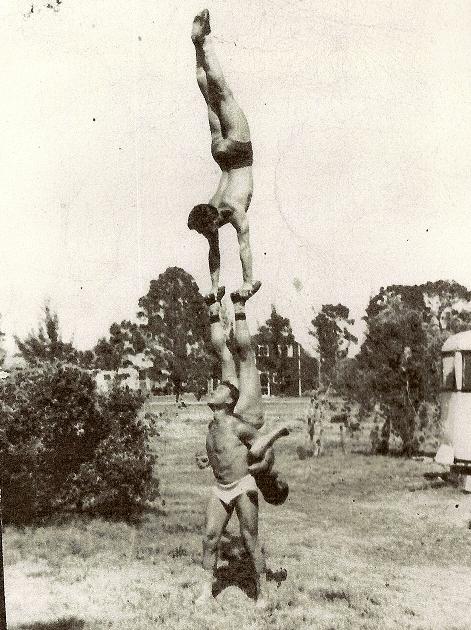[youtube:https://www.youtube.com/watch?v=BAnuz6_3avc]
Fish Tail Press Up to Handstand
Got another video for you. This one is from next month’s Acrobat Accelerator.
A slightly more advanced move, but in the complete video you’ll be taken through the steps to get up to this move.
Here’s what it says in The True Art and Science of Hand Balancing about the Fish Tail Press Up.
Lie flat on the back, with the hands and arms close to the sides, with the hands flat on the floor, then by resisting with the hands, you draw the legs up slowly, and rigid, keep the legs going until you are up, resting on your head and shoulders, then change the position of the hands by placing them along side of the head flat on the floor; then let the feet drop about six inches, then drive them up, and push up to a handstand, the legs are kept rigid all the time.
That’s one long run on sentence but it describes the move well.
This move takes strong abs just to get into the plough position and hold it with your legs over your head. I suppose you could call this move the Plough press too. The more you drive with the legs the less you have to push with your arms but you have to do both.
Give it a shot and see how it goes.
On another note the May Sale is moving fast. Many items are sold out but others like the Paulinetti and Jones’ book and the Tumbling Course still have many in stock. https://lostartofhandbalancing.com/maysale.html
If you’ve stalled, wait no longer. The sale will come down late Sunday even if there’s a few items left.
Good Luck and Good Hand Balancing,
Logan Christopher








